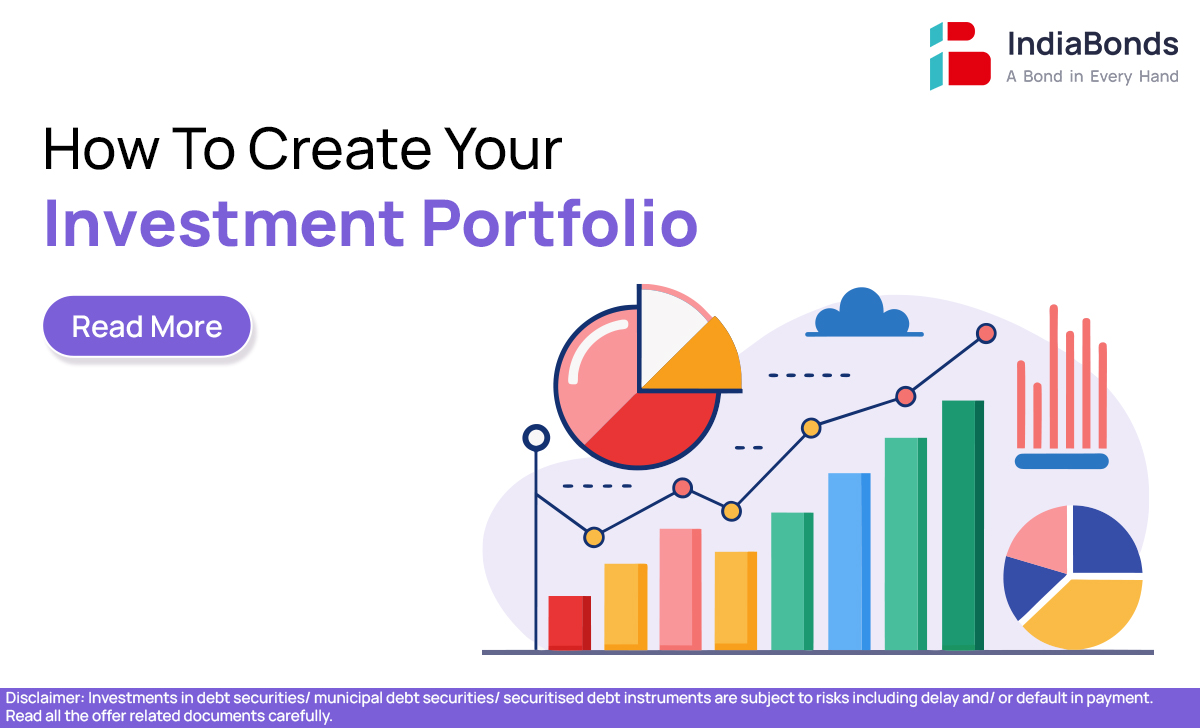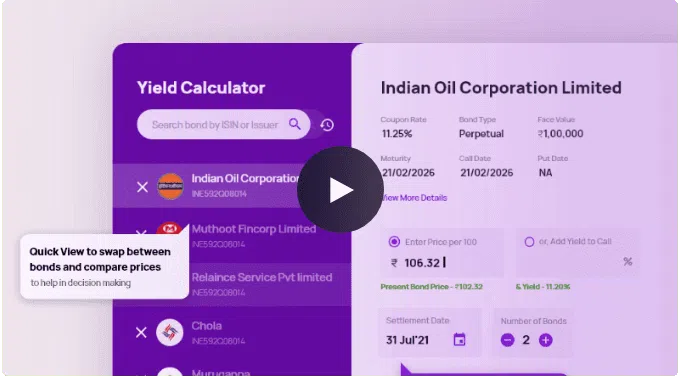How To Create Your Investment Portfolio

Introduction
We got it. Investing sounds scary and complicated. Everyone talks about portfolios and asset allocation like you’re supposed to already know what that means. Well, I’m here to explain it like you’re five years old, because honestly, that’s how I learned too.
Picture this: you have a big jar where you keep your money. But instead of keeping it all in cash, you split it up into different things that might grow over time. Some money goes into company stocks, some into government bonds, maybe into real estate. That jar? That’s your investment portfolio.
The whole point is simple – don’t put all your eggs in one basket. If one thing goes bad, you’ve got other stuff to keep you afloat.
Learn About Financial Portfolio Management
Here’s something nobody tells you when you’re starting out – financial advisors are great, but they’re not going to check on your money at 2 AM when you can’t sleep. You are.
Financial portfolio management is just a fancy way of saying “keeping track of where you put your money and making sure it’s working for you.” Think of yourself as the manager of your own little money team.
I learned this the hard way when I trusted someone else completely with my savings. Big mistake. Now I handle my own stuff, and honestly, it’s not that hard once you get the hang of it.
Establish the Different Types of Portfolio Investments
Before you throw money at random stocks, you need a strategy. Here are the main investing strategies regular people use:
- The Patient Approach: Buy good stuff and wait. That’s it. I bought some index funds five years ago and basically forgot about them. Best decision ever. It’s like planting a garden – you don’t dig up the seeds every week to see if they’re growing.
- The Cautious Approach: If losing money makes you physically sick, this is your route. You put most of your cash in safe places like government bonds or high-yield savings accounts. You won’t become a millionaire overnight, but you also won’t lose your shirt.
- The Roller Coaster Approach: This is for people who can watch their account balance swing up and down without having a heart attack. You might put more money in individual stocks or newer companies. It’s like being on a roller coaster – thrilling but not for everyone.
Let me break down the main investment options without all the Wall Street jargon:
- Company Stocks: When you buy a stock, you own a tiny piece of that company. If McDonald’s does well, your McDonald’s stock probably goes up. If they mess up, it might go down. It’s that simple.
- Government and Corporate Bonds: These are basically IOUs. You lend money to the government or a company, and they promise to pay you back with a little extra. It’s usually safer than stocks but doesn’t make you as much money.
- Mutual Funds: Think of these as pre-made investment meals. Some professional picks a bunch of different stocks and bonds, mixes them together, and you buy a piece of the whole thing. Perfect if you don’t want to research individual companies.
- Real Estate Investment Trusts: Instead of buying an actual house and dealing with tenants, you can buy shares in companies that own lots of buildings. You get the benefits of real estate without fixing anyone’s toilet.
Put Your Money Into Different Funds
This part stressed me out for months before I finally just did it. Here’s the step-by-step:
Open an investment account somewhere:
I use platforms like Zerodha or Groww, but Upstox and Angel One work fine too. It’s like opening a checking account but for investments.
Start with money you can afford to lose:
I started with ₹15,000. Not because that’s the minimum, but because I wanted to see how it worked without risking my rent money.
Pick something simple first:
Look for index funds that track the Nifty 50 or Sensex. These basically buy a little bit of the 50 or 30 biggest companies in India. Boring but effective.
Set it on autopilot:
Once you’re comfortable, set up automatic transfers. I have ₹5,000 moved from my checking account to investments every month. I don’t even think about it anymore.
Diversify Across the Same Asset Classes
Diversification is just a fancy word for “don’t put all your money in one thing.” Even my grandma knew this – she always said don’t keep all your money under the same mattress.
If you’re buying individual stocks, don’t buy five different tech companies and call it diverse. Get some healthcare stocks, some consumer goods, maybe some international stuff. It’s like eating – you need variety to stay healthy.
I made this mistake early on. I thought I was being smart by buying Tata, Reliance, Infosys, HDFC Bank, and Maruti Suzuki. Turns out, when the stock market had a bad month, all my investments tanked together. Learn from my stupidity.
Determine Your Asset Split Based on Your Age
There’s this old rule that actually makes sense: take your age and subtract it from 100. That’s roughly how much you should have in stocks.
- So if you’re 25: 100 – 25 = 75% stocks, 25% bonds
- If you’re 45: 100 – 45 = 55% stocks, 45% bonds
- If you’re 65: 100 – 65 = 35% stocks, 65% bonds
The logic is simple. When you’re young, you have decades to recover from market crashes. When you’re older, you need your money to be safer because you might need it soon for retirement.
But here’s the thing – this is just a starting point. If you’re 25 but the thought of losing money keeps you awake at night, maybe do 60% stocks instead. Your peace of mind matters more than following some random rule perfectly.
Continue to Tweak Your Portfolio
Your investment portfolio isn’t like a crock pot where you set it and forget it. You need to check on it occasionally and make small adjustments.
1. Rebalancing Every Few Months:
Let’s say you wanted 70% stocks and 30% bonds. After six months, your stocks did great and now you have 80% stocks and 20% bonds. You might want to sell some stocks and buy bonds to get back to your target. I do this maybe twice a year. Any more than that and you’re probably overthinking it.
2. Keep Adding Money:
The people who get rich from investing aren’t the ones who picked the perfect stock. They’re the ones who kept adding money consistently over years. Even ₹1,000 a month adds up over time.
3. Don’t Freak Out When Things Go Bad:
Markets crash. It happens. In 2020, my portfolio dropped 30% in like three weeks. I was terrified but didn’t sell anything. Six months later, it was higher than ever. If you panic and sell during crashes, you’re basically buying high and selling low – the opposite of what you want.
Investment and Risk Management
Every investment has some risk. The trick is knowing what you’re getting into.
- Super Safe Stuff:
High-yield savings accounts and government bonds are about as safe as it gets. Your money won’t disappear, but it probably won’t grow much either. With inflation, you might actually lose buying power over time.
- Medium Risk Stuff:
A mix of stock and bond funds gives you growth potential without being too crazy. This is where most normal people should park their money. You’ll have some bad months, but over years, you should come out ahead.
- Risky Stuff:
Individual stocks, especially in newer companies, can make you rich or poor pretty quickly. I put maybe 5% of my investment money in individual stocks, just for fun. Think of it as gambling money – only use what you can afford to lose completely.
FAQ
How can I create my own investment portfolio?
Start simple – open an investment account with any major brokerage like Zerodha or Groww. Begin with a small amount you can afford to lose, maybe ₹5,000 or ₹10,000. Pick a basic Nifty 50 index fund to start with. Once you’re comfortable, you can branch out into other investments. The key is just to begin, even if you don’t know everything yet.
How do I start my investment portfolio?
First, figure out how much money you can invest without touching your emergency fund or bill money. Open a brokerage account online – it takes about 10 minutes. Transfer your starting amount and buy your first investment. I recommend starting with broad market index funds because they’re simple and diversified. Set up automatic monthly contributions if you can.
What is the 10/5/3 rule of investment?
This rule suggests that over long periods, stocks might return around 10% annually, bonds around 5%, and savings accounts around 3%. But remember, these are rough averages over many years – some years will be much higher, others much lower. Don’t expect these exact returns every single year. It’s more about understanding that different investments have different expected returns over time.
How do I make my own investment portfolio?
Think of it like building a balanced meal. You want some growth (stocks), some stability (bonds), and maybe some alternatives (real estate funds). Start by deciding your stock-to-bond ratio based on your age and risk tolerance. Then pick low-cost index funds in each category. Rebalance every few months to keep your target percentages. Keep adding money regularly – that’s the secret sauce most people miss.
Final Thoughts
Look, I’m not some Wall Street genius. I’m just a regular person who figured out that letting money sit in a savings account earning 0.01% interest was dumb. Creating an investment portfolio isn’t rocket science – it’s more like learning to cook. Start with simple recipes, don’t be afraid to mess up, and get better over time.
The hardest part is just starting. Open that account, put in whatever you can afford, and pick something simple like a Nifty 50 index fund. You don’t need to be perfect right away. You just need to begin.
I wish someone had explained this stuff to me in plain English years ago. I wasted so much time being intimidated by financial jargon when the basic concepts are actually pretty straightforward. Don’t make the same mistake I did – start now, start small, and learn as you go.
Your future self will be grateful you took control of your money today. And who knows? Maybe in a few years, you’ll be the one explaining this stuff to someone else who’s just getting started.
Disclaimer : Investments in debt securities/ municipal debt securities/ securitised debt instruments are subject to risks including delay and/ or default in payment. Read all the offer related documents carefully.


















Indiabonds | 5 min

Indiabonds | 5 min
















